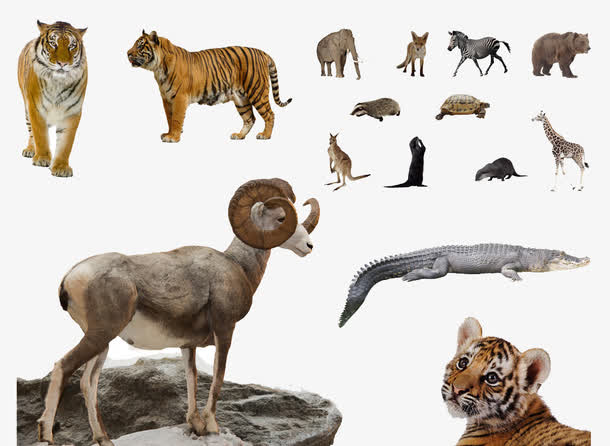Animal perception refers to the ability of animals to receive and process information about the external environment through their senses, and then produce behavioral responses. Studies have shown that animal perception not only relies on common senses such as vision, hearing, smell, touch and taste, but also includes more complex forms of perception. By understanding the perceptual system of animals, we can better understand how they adapt to the environment and make behavioral choices, which is of great significance for animal protection and ecological research.

Perception is the process by which the senses receive external stimuli and convert them into information that the brain can understand. For animals, the perceptual system helps them detect food, avoid predators, find mates, establish territories and other survival activities. The perceptual system of animals varies from species to species, and different animals have evolved unique sensory abilities based on their living environment.
Vision: Many animals rely on vision to perceive their surroundings. For example, birds of prey (such as eagles) have extremely sharp vision that allows them to spot prey thousands of meters away. And insects (such as bees) use compound eyes to capture ultraviolet light, which helps them identify flowers and find nectar.
Hearing: The perception of sound is vital for many animals. Bats navigate by echolocation, relying on sound waves to detect prey and obstacles. Whales and dolphins also use ultrasound to communicate and detect objects.
Smell: The sense of smell is important for the survival of many animals. For example, dogs have an extremely keen sense of smell, and they use smell to distinguish food, companions, and strangers. Ants rely on chemical smells (pheromones) to transmit information and coordinate collective actions.
Taste: Animals have different sensitivities to taste. Cats have a weaker sense of sweetness, while insects have a variety of taste receptors that help them choose suitable food in complex environments.
Touch: Touch is not limited to skin contact. Animals can also sense changes in the environment through touch. For example, spiders rely on the vibration of the sensory web to judge the size and distance of prey, and Elephants-Are-Endangered.html">elephants use their feet to feel the vibration of the ground and sense the movement of their companions from a distance.
Other special perceptions: Some animals have special perception systems. Electric eels can detect prey through electric fields, sea turtles can sense the earth's magnetic field to migrate long distances, and snakes can detect temperature changes by sensing infrared rays, which helps them hunt at night.
In addition to basic sensory perception, more and more studies have found that animals also have certain cognitive abilities. Cognition includes animals' ability to process information, remember, learn, and reason. Many advanced animals not only rely on sensory perception to respond, but also adjust their behavior through experience and learning.
Learning ability: Many animals are able to learn through experience and trial and error. For example, crows are one of the smartest birds known, and they can use tools to obtain food and remember complex procedures.
Problem-solving ability: Primates and marine mammals such as orangutans and dolphins demonstrate powerful problem-solving abilities. They can use tools, imitate the behavior of others, and even infer the intentions of others.
Memory: Animals such as Elephants-Are-Endangered.html">elephants and whales have strong memories that help them migrate and forage in vast environments.
Self-awareness: Some animals, especially primates, dolphins, and Elephants-Are-Endangered.html">elephants, have demonstrated a certain degree of self-awareness through the mirror test, and can recognize themselves in the mirror.
The perceptual system of animals is the result of evolutionary adaptation, and the sensory systems of different species are closely related to their living environment. Animals living on the ground, such as horses and deer, have evolved a wide field of vision to help them stay alert while eating grass. Animals living underground, such as moles, have degenerate vision and rely on smell and touch to perceive the environment.
Vision evolution of nocturnal animals: Nocturnal animals (such as owls and cats) have a large number of rod cells in their retinas, which enable them to see clearly in low-light environments.
Hearing evolution of underwater animals: Many marine mammals (such as whales and dolphins) perceive the underwater environment through ultrasound, because sound travels faster in water, helping them navigate and communicate in the vast ocean.
Research on animal perception not only reveals how they behave, but also provides a scientific basis for animal protection. By understanding animal perception and cognition, we can take more effective conservation measures, such as avoiding the impact of light pollution on nocturnal animals or reducing the disturbance of noise pollution on marine life.
Reduce light pollution: Light pollution has a huge impact on migrating birds and nocturnal animals. By controlling lighting in cities and coastal areas, the disturbance of their lives can be reduced.
Prevent noise pollution: Noise pollution in the ocean, such as ship noise and sound waves from marine exploration activities, affects the echolocation ability of marine mammals such as whales and dolphins. Noise control measures can reduce this impact.
Animal perception is an important basis for their adaptation, survival and reproduction. By studying the sensory systems and cognitive abilities of animals, we can not only better understand their behavior, but also provide a scientific basis for species conservation and ecosystem management. Whether it is basic research in the laboratory or ecological conservation in the wild, understanding animal perception is crucial to the protection of global biodiversity.
animal tags: perception
We created this article in conjunction with AI technology, then made sure it was fact-checked and edited by a Animals Top editor.